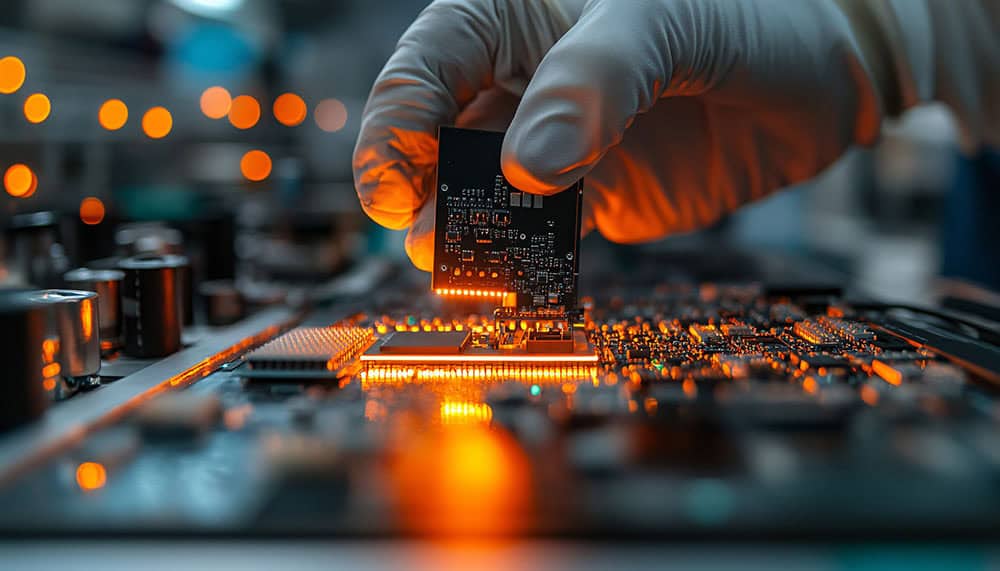In industries where precision, safety, and cleanliness are paramount, maintaining a controlled environment is essential. Cleanrooms provide this setting, reducing airborne particles, strictly controlling temperature, humidity, and pressure, and ensuring that any static charge is kept to a minimum. For industries such as electronics manufacturing, biotechnology, and pharmaceuticals, electrostatic discharge (ESD) can be particularly damaging to both sensitive equipment and products. Enter the ESD chair: a specialised piece of equipment that plays a critical role in cleanroom compliance and workplace safety.
What Is an ESD Chair?
An ESD chair is specifically designed to control electrostatic discharge, which can cause serious damage to electronic components and other delicate materials. Unlike standard office chairs, ESD chairs are constructed with materials and design features that prevent the build-up of static electricity. They are grounded to ensure that any static generated by a person seated on the chair is safely dissipated, helping to maintain a stable, low-static environment.
Why Cleanrooms Need ESD Chairs
Cleanrooms are specially constructed environments where every element is controlled to prevent contamination and ensure product quality. Static discharge, if left unmanaged, can disrupt delicate processes, damage components, and even pose safety risks. ESD chairs help in several ways:
- Preventing Contamination: Cleanrooms are highly sensitive to particles and debris that can interfere with manufacturing or testing processes. ESD chairs are often designed to prevent particle shedding, ensuring they won’t contribute to contamination in the cleanroom environment.
- Protecting Sensitive Components: Many industries, particularly electronics, handle extremely delicate components that can be damaged by even the smallest electrostatic discharge. ESD chairs reduce this risk by dissipating static build-up from personnel to the ground, avoiding accidental discharges that could otherwise cause costly damage.
- Compliance with Industry Standards: To meet industry requirements and ensure product quality, many cleanrooms must adhere to specific regulations, such as ISO standards for cleanliness and ESD protection. ESD chairs contribute to meeting these standards, ensuring a compliant, static-free environment.
Key Features of ESD Chairs for Cleanrooms
An ESD chair differs from a standard office chair in both material and design. Here are some features that make ESD chairs well-suited for cleanroom use:
- ESD-Safe Upholstery and Materials: Cleanroom ESD chairs are constructed with specialised, non-shedding materials that minimise particle emissions. Materials such as vinyl or urethane are often chosen for upholstery, as they are easy to clean, resistant to contamination, and provide safe static dissipation.
- Static-Dissipative Wheels and Glides: The wheels and glides on ESD chairs are made of materials that prevent the build-up of static electricity, ensuring that even when the chair is moved, it won’t generate dangerous discharges.
- Grounding Cables or Conductive Elements: Many ESD chairs come with built-in grounding cables or conductive elements that connect the chair to an ESD floor, preventing static build-up by safely discharging it into the ground. This feature is critical for ensuring that no static charge accumulates in a sensitive cleanroom environment.
How ESD Chairs Support Cleanroom Compliance Standards
Several regulatory standards dictate the requirements for ESD control and cleanroom compliance. Two key standards are:
- ISO 14644-1 for Cleanrooms: This standard specifies the classification of air cleanliness based on particle concentration. ESD chairs, designed to minimise particulate emission and control static build-up, help cleanrooms maintain these strict cleanliness levels.
- BS EN 61340-5-1 for ESD Control: This British standard provides guidance for the development of an ESD control programme, which is vital for cleanrooms in electronics manufacturing. Using ESD-compliant furniture, like ESD chairs, contributes to compliance by preventing static discharge near sensitive equipment.
Benefits of Using ESD Chairs in Cleanrooms
Integrating ESD chairs into cleanrooms has numerous benefits, including:
- Enhanced Product Quality: In environments where precision is key, even minor static discharges can lead to defective products. ESD chairs ensure that static is properly managed, protecting the integrity of components and end products.
- Cost Savings: Static-related damages can lead to costly repairs, replacements, and, in severe cases, recalls. ESD chairs reduce these risks by eliminating the likelihood of static damage to expensive components.
- Worker Safety: In some cleanrooms, even small electrostatic discharges can pose safety risks to personnel. ESD chairs provide an additional layer of protection, particularly in industries dealing with volatile substances.
- Improved Compliance: Using ESD chairs helps organisations meet industry and regulatory standards. This ensures not only quality control but also positions the organisation favourably in audits and inspections.
Choosing the Right ESD Chair for Your Cleanroom
When selecting ESD chairs for cleanroom use, it’s essential to consider specific cleanroom requirements, including:
- Cleanroom Classification: Different cleanrooms have different particle emission requirements, so choose an ESD chair with low particulate generation that meets your specific ISO classification.
- Material Durability: Cleanrooms often require frequent sanitation. Select chairs made from durable, easy-to-clean materials that can withstand regular cleaning without degrading.
- Mobility Requirements: For some cleanrooms, mobility is key. Choose chairs with ESD-safe wheels if movement is necessary, or opt for glides if the chair should remain stationary.
Final Thoughts
In environments where cleanliness and static control are non-negotiable, ESD chairs play a vital role in cleanroom compliance. Their unique construction, material selection, and grounding capabilities make them indispensable tools for maintaining a safe, efficient, and compliant workspace. By investing in high-quality ESD chairs, companies in the UK can protect their products, their employees, and their bottom line—ensuring they meet regulatory standards and maintain the highest quality in their operations.


